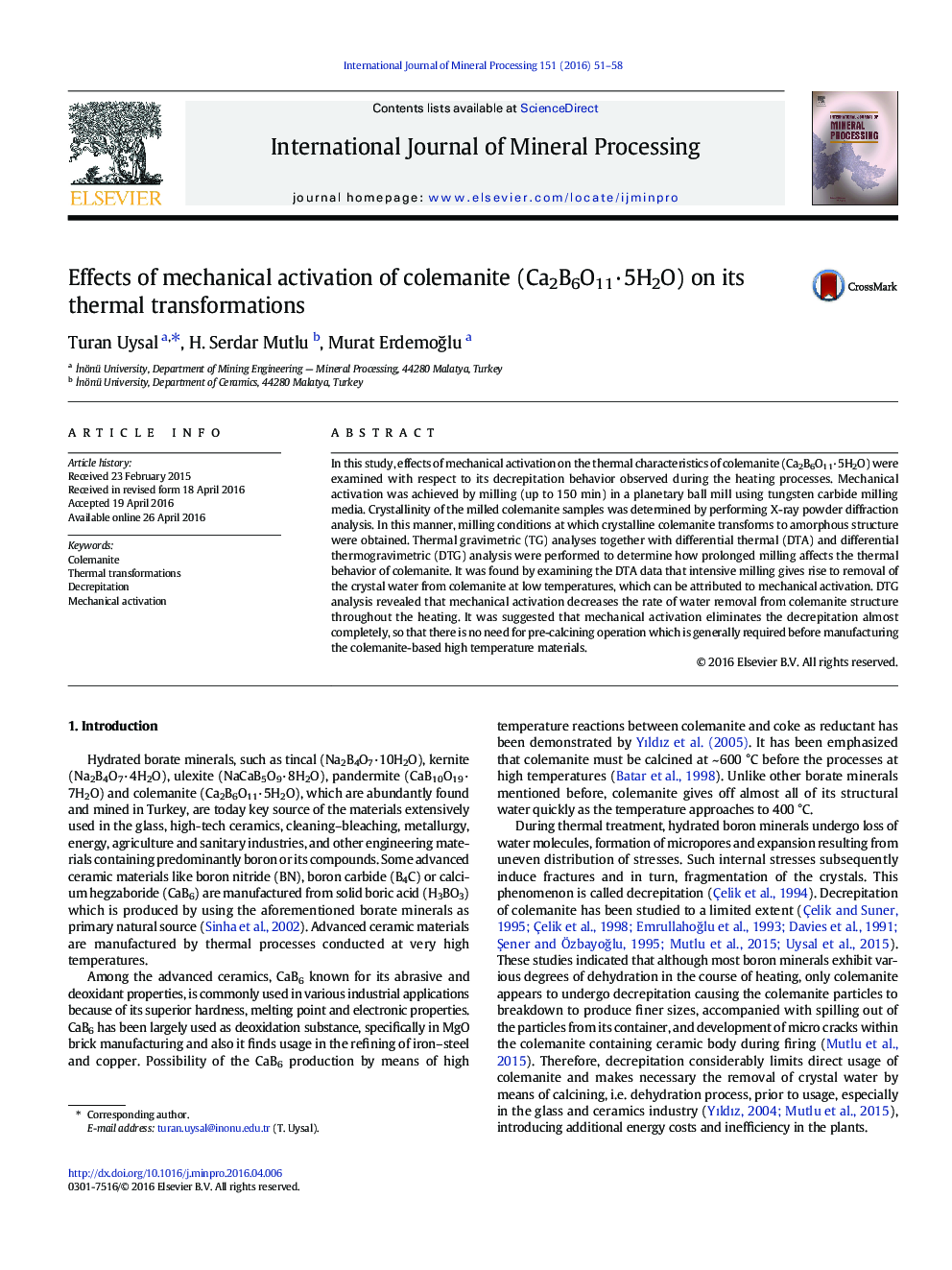| Article ID | Journal | Published Year | Pages | File Type |
|---|---|---|---|---|
| 213684 | International Journal of Mineral Processing | 2016 | 8 Pages |
•Mechanical energy transferred to colemanite by intensive planetary ball milling causes a noticeable X-ray amorphization.•Loss of crystal water arising at low temperature and low rate by intensive milling is attributed to mechanical activation.•Mechanical activation avoids decrepitation of colemanite. So, it can be directly used in the manufacturing of ceramics.
In this study, effects of mechanical activation on the thermal characteristics of colemanite (Ca2B6O11·5H2O) were examined with respect to its decrepitation behavior observed during the heating processes. Mechanical activation was achieved by milling (up to 150 min) in a planetary ball mill using tungsten carbide milling media. Crystallinity of the milled colemanite samples was determined by performing X-ray powder diffraction analysis. In this manner, milling conditions at which crystalline colemanite transforms to amorphous structure were obtained. Thermal gravimetric (TG) analyses together with differential thermal (DTA) and differential thermogravimetric (DTG) analysis were performed to determine how prolonged milling affects the thermal behavior of colemanite. It was found by examining the DTA data that intensive milling gives rise to removal of the crystal water from colemanite at low temperatures, which can be attributed to mechanical activation. DTG analysis revealed that mechanical activation decreases the rate of water removal from colemanite structure throughout the heating. It was suggested that mechanical activation eliminates the decrepitation almost completely, so that there is no need for pre-calcining operation which is generally required before manufacturing the colemanite-based high temperature materials.
Graphical abstractFigure optionsDownload full-size imageDownload as PowerPoint slide
